In the August Empire State Manufacturing Survey, the headline general business conditions index dropped sharply from 43.0 to 18.3, even worse than expectation of 28.9. New York Fed said manufacturing activity continued to increase the the New York state, but growth was much slower. Index of future business conditions, on the other hand, rose from 39.5, pointing to ongoing optimism about future conditions.
AUD/JPY falls sharp on surging delta infections, tougher restrictions
AUD/JPY drops sharply today on a couple of risk-off factors. Australia itself is troubled by heavier restrictions on surge of Delta variant. New South Wales reported record infections while Melbourne is back in night curfew. Lockdown in the Australian Capital territory was extended for another two weeks. Northern Territory also enters a three day snap lockdown.
AUD/JPY’s strong break of 80.69 support suggests that consolidation from 79.82 has already completed at 81.56, capped well below falling 55 day EMA. Deeper fall is now expected to 79.82 support first. Break will resume the whole decline from 85.78. Such decline is possibly correcting the whole up trend from 59.85, and would target 78.44 resistance turned support, or further to 38.2% retracement of 59.85 to 85.78 at 75.87 before completion.
Fed Kashkari: Ready to start tapering after a few more strong job reports
Minneapolis Fed President Neel Kashkari said in a Bloomberg interview, “if we see a few more jobs reports like the one we just got, then I would feel comfortable saying yeah, we are — maybe haven’t completely filled the hole that we’ve been in — but we’ve made a lot of progress, and now, then will be the time to start tapering our asset purchases.”
“I’m not convinced we were actually at maximum employment before the Covid shock hit us. So, that’s exactly why I want us to be really humble about declaring, ‘This is as good as it can get’,” he said.
He added that labor force participation and employment rates have to be “at least back to where they were before” and that’s a “reasonable thing for us to try to achieve.”
China industrial production, retail sales, investment missed expectations
Industrial production rose 6.4% yoy in July, below expectation of 7.8% yoy. Retail sales rose 8.5% yoy, below expectation of 11.5% yoy. Fixed asset investment grew 10.3% ytd yoy, below expectation of 11.3% ytd yoy.
“Given the combined impact of sporadic local outbreaks of Covid-19 and natural disasters on the economy of some regions, the economic recovery is still unstable and uneven,” said NBS. “We should not only look at the growth to analyze the economic situation, but also need to look at the overall picture of employment, prices and residential incomes.”
Japan GDP grew 0.3% qoq, 1.3% annualized in Q2
Japan GDP grew 0.3% qoq in Q2, above expectation of 0.2% qoq. The economy was back in growth after -1.0% qoq contraction in Q1. In annualized term, GDP grew 1.3%, above expectation of 0.7%.
Looking at some details, external demand contracted -0.3% qoq, versus expectation of -0.1% qoq. Capital expenditure rose 1.7% qoq, matched expectations. Private consumption grew 0.8% qoq, much better than expectation of -1.0% qoq. Price index dropped -0.7% yoy, worse than expectation of -0.4% yoy.
LegacyFX Sponsorship of the Spanish Football Club Real Betis Balompié
LegacyFX is proud to announce their sponsorship of the professional Spanish football club, Real Betis Balompié, S.A.D.
Real Betis Balompié S.A.D-commonly known as Real Betis, plays in Spain’s professional football league, La Liga. The club was founded in 1907 and is based out of Seville, Andalusia in Spain. Their home-field stadium–Estadio Benito Villamarín, holds a 61,000 seat capacity. Last year, the club finished in 6th place earning a spot in the UEFA Europa League for the 2021/2022 season. Some of their current notable players include Joaquín Sánchez Rodríguez and Nabil Fekir.
“We, at LegacyFX, are always looking to present our brand in a successful and promising manner. As such, we chose one of the best teams in LaLiga, due to its rich history in Spain, Europe, and even worldwide. We believe that this partnership with Real Betis is in-line with our vision, will positively represent our brand to our clientele proudly, and catapult our name as a truly leading global brokerage.” – Jad Abdelrahman, Chief Executive Officer at LegacyFX
As an international company that caters to clientele across the globe, LegacyFX appreciates the universal clout and reach that football carries and hopes that through this partnership it will be able to foster greater relations within the forex community, with the Club, and the football industry.
Eurozone exports rose 23.8% yoy in Jun, imports rose 28.2% yoy
Eurozone exports to the rest of the world rose 23.8% yoy to EUR 209.9B in June. Imports from the reset of the world rose 28.2% yoy to EUR 191.8B. As a result, Eurozone record a EUR 18.1B surplus, comparing to EUR 20.0B a year ago. Intra-Eurozone trade rose 24.6% yoy to EUR 188.0B.
In seasonally adjusted terms, Eurozone exports dropped -0.1% mom to EUR 197.7B. Imports was nearly unchanged at EUR 185.3B. Trade surplus narrowed to EUR 12.4B, down from EUR 13.8B, above expectation of EUR 9.3B.
NZD/USD stuck in range, with mild bearish bias
New Zealand Dollar is one of the better performers this week, together with Australian and Canadian. Nevertheless, it’s just stuck in range against Dollar for now. NZD/USD is extending the range pattern from 0.6879. The failure to break through 55 day EMA firmly is keeping near term outlook mildly bearish.
Overall, price actions from 0.7463 are seen as correcting the whole up trend from 0.5467. Downside momentum is diminishing as seen in daily MACD. Hence, in case of another fall, strong support would likely be seen from 38.2% retracement of 0.5467 to 0.7463 at 0.6701 to contain downside. On the upside, break of 0.7104 resistance will suggest that the correction has completed and bring stronger rebound back to 0.7315/7463 resistance zone.
New Zealand BusinessNZ manufacturing rose to 62.6, second highest on record
New Zealand BusinessNZ Performance of Manufacturing Index rose from 60.9 to 62.6 in July. That’s the second highest reading after March’s 63.6. Looking at some details, production rose from 64.4 to 66.0.. Employment rose from 56.7 to 58.3, a new record. New orders rose from 63.6 to 65.0. Finished stocks dropped from 57.4 to 56.9. Deliveries rose from 55.2 to 57.9.
However, the position of negative comments (51.4%) still remained higher than positive ones (48.6%). Increased domestic and overseas orders was the common factor for positive comments. In contrast, tight labor market, supply chain issues and raw material costs were the negatives.
BNZ Senior Economist, Craig Ebert stated that “while New Zealand’s PMI is doing exceptionally well, we are also conscious of the headwinds happening for global manufacturing. This is on account of the resurgence of COVID19 in its delta strain.”
NIESR expects UK GDP to grow 1% in July, 2.4% in Q3
UK NIESR said, “with catch-up potential still evident in consumer-facing services and the continued effects of reopening, we expect growth in July of 1 per cent, and 2.4 per cent for the third quarter of 2021 overall.” But that reflected the assumption that Covid-19 cases will “continue to wane and remaining domestic restrictions imposed by governments and businesses will be lifted over the course of the third quarter.”
“GDP increased by 4.8 per cent in the second quarter of 2021, in line with our GDP tracker a month ago. More frequent visits to GPs meant that the health and social work sector was the largest contributor to June growth, while construction continued to slow after a strong start to the year. We expect growth to slow in the third quarter but still remain high by historical standards on the assumption of waning Covid-19 cases and lifting of all domestic restrictions by the end of the third quarter. It will be important to monitor the underlying growth rate of the economy as the opening-up effects dissipate.” Dr Hande Küçük Deputy Director – Macroeconomic Policy.
US PPI rose 1.0% mom in Jul, accelerated to 7.8% yoy
US PPI for final demand rose 1.0% mom in July, above expectation of 0.6% mom. Over that last 12 months, PPI accelerated to 7.8% yoy, up from 7.3% yoy, above expectation of 7.4% yoy. That’s the largest yoy rate since November 2010.
PPI for final demand less foods, energy and trade services rose 0.9% mom, largest rise since January. Over the last 12 months, PPI for final demand less foods, energy and trade services rose 6.1% yoy, highest since August 2014.
US initial jobless claims dropped to 375k, above expectation
US initial jobless claims dropped -12k to 375k in the week ending August 7, above expectation of 367k. Four-week moving average of initial claims rose 1.75k to 396k.
Continuing claims dropped -114k to 2866k in the week ending July 31, lowest since March 14, 2020. Four-week moving average of continuing claims dropped -100k to 3101k, lowest since March 21, 2020.
Eurozone industrial production dropped -0.3% mom in Jun, EU down -0.2% mom
Eurozone industrial production dropped -0.3% mom in June, matched expectations. Production of capital goods fell by -1.5% and energy by -0.6%, while production of durable consumer goods and intermediate goods both rose by 0.1% and non-durable consumer goods by 1.6%.
EU industrial production dropped -0.2% mom. Among Member States for which data are available, the largest decreases were registered in Ireland (-4.4%), Portugal (-2.6%) and Denmark (-2.3%). The highest increases were observed in Malta (+5.2%), the Netherlands (+3.3%) and Estonia (+3.2%).
Fed Daly: Talking about tapering later this year or early next year is where I’m at
San Francisco Fed President Mary Daly said in an FT interview that she remained “very optimistic and positive”. She added, ” it’s appropriate to start discussing dialling back the level of accommodation that we’re giving the economy on a regular basis
“The starting point for that is of course asset purchases,” she said. “Talking about potentially tapering those later this year or early next year is where I’m at.”
On the employment markets, she said “we’re really adding enough jobs to see that we’re making progress towards our full employment goal.” While “we’re not there yet… we’re chipping away at the hole that was dug by Covid.”
UK GDP grew 1.0% mom in June, 4.8% qoq in Q2
UK GDP grew 1.0% mom in June, matched expectations. That’s the fifth consecutive month of growth, GDP remained -2.2% below it’s pre-pandemic level in February 2020. Services was the main contributor, growing 1.5% mom. Production, on the other hand, dropped -0.7% mom while contraction also dropped -1.3% mom.
For Q2 as a whole, GDP grew 4.8% qoq, still -4.4% below the pre-pandemic level in Q4, 2019. ONS said, “there were increases in nearly all main components of expenditure apart from “trade”, with the largest contribution from household consumption”.
Fitch affirms Japan rating at A with negative outlook
Fitch affirmed Japan’s Long-Term Foreign-Currency Issuer Default Rating (IDR) at ‘A’ with a “negative” outlook. The ratings “balance the strengths of an advanced and wealthy economy, with correspondingly robust governance standards and public institutions, against weak medium-term growth prospects and very high public debt”. The negative outlook reflected “uncertainty about the medium-term macroeconomic and fiscal outlook from the continuing pandemic”.
The rating agency expects economic growth of 22.5% in 2021 and 3.0% in 2022. But risks are to the downside, as the ongoing fifth Covid-19 wave may further delay recovery. Inflation is likely to “remain subdued”, averaging 0.3% in 2021 and 0.7% in 2022. Fitch also said BoJ is likely to maintain its current monetary policy settings over the “next few years”.
DOW hit new record as up trend enters into acceleration
DOW rose to close at new record high at 35484.97 overnight, up 0.62%. The slight moderation in core CPI in the US seemed to be welcome by investors. The development so far affirmed the view of the “transitory” camp in Fed. While it’s still on track for tapering, probably sooner than expected, there is still much room to wait-and-see before eventually raising interest rates, probably late next year.
Technically, the long term up trend in DOW now looks ready to enter into another near term acceleration phase. Outlook will stay bullish as long as this week’s low at 35041 holds. Next target is 61.8% projection of 26143.77 to 35091.56 from 33741.76 at 37159.81. We’ll see if DOW could hit this level within Q3.
Fed Kaplan: Could announce tapering in Sep, starts in Oct
Dallas Fed President Robert Kaplan said yesterday that if the economy unfolds between now and the September meeting as he expected, “I would be in favor of announcing a plan at the September meeting and beginning tapering in October.”
“The reason I’m saying we ought to begin the tapering soon is I think these purchases are very well equipped to stimulate demand. But we don’t have a demand problem in the economy,” he told CNBC.
“My thought is I’d rather take the foot off the accelerator soon and reduce the RPMs,” he added. “What I don’t want to do is keeping running at this speed for too long and then we’re going to have to take more aggressive action down the road.”
Fed George: Time has come to dial back the settings
Kansas City Fed President Esther George said in a speech, “with the recovery underway, a transition from extraordinary monetary policy accommodation to more neutral settings must follow”. She added, “today’s tight economy… does signal that the time has come to dial back the settings” of monetary stimulus.
“While recognizing that special factors account for much of the current spike in inflation, the expectation of continued strong demand, a recovering labor market, and firm inflation expectations are consistent, in my view, with the Committee’s guidance regarding substantial further progress toward its objectives. I support bringing asset purchases to an end under these conditions,” she said.




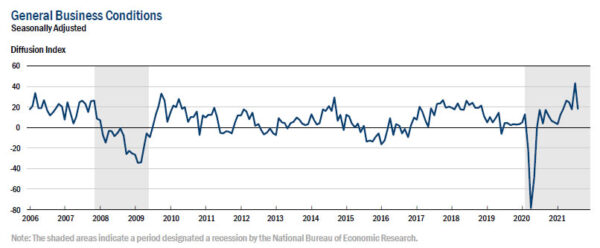
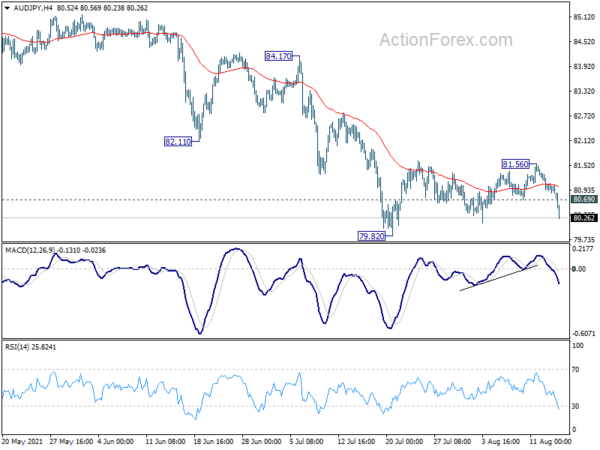
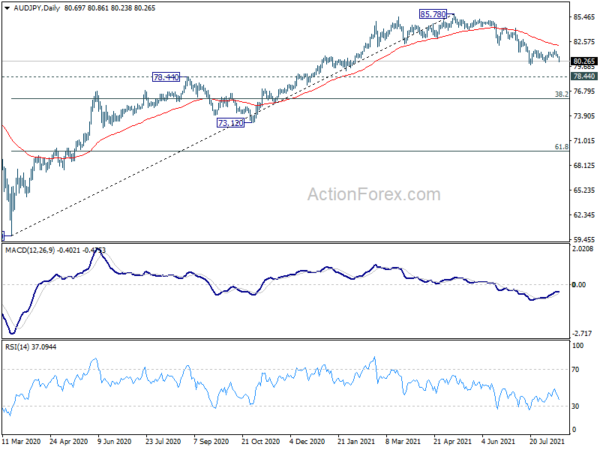
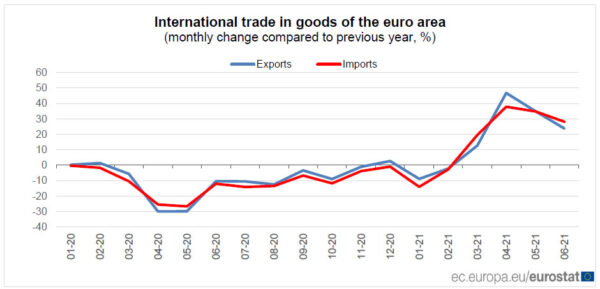
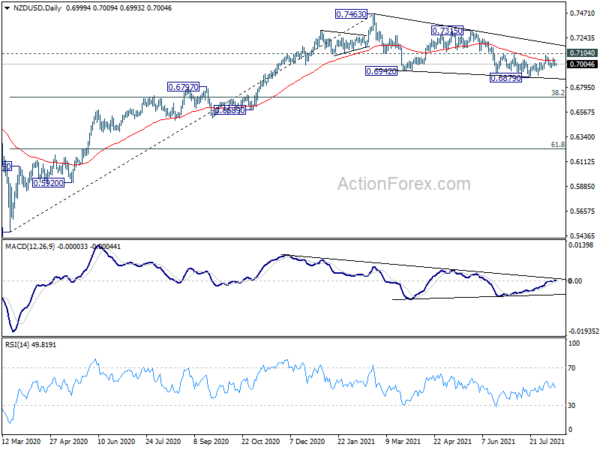
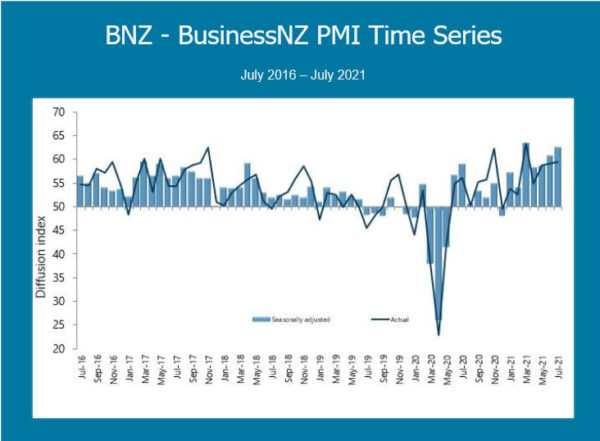
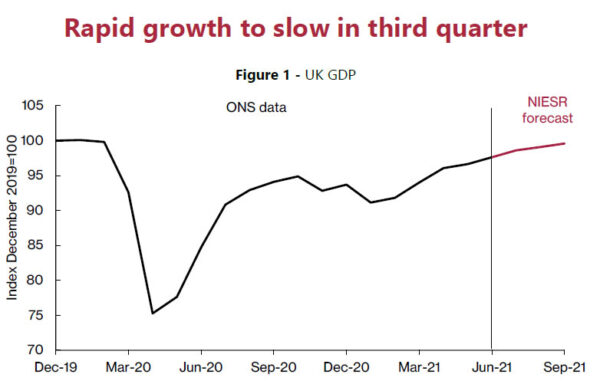
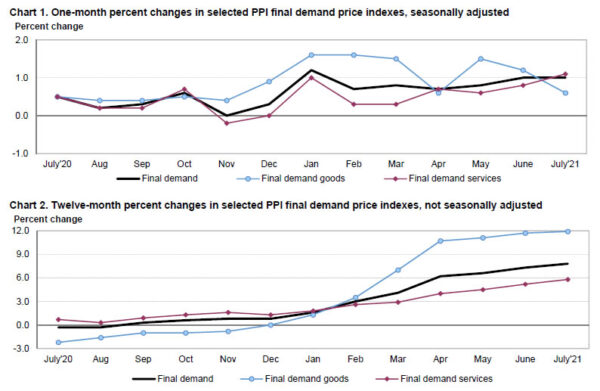
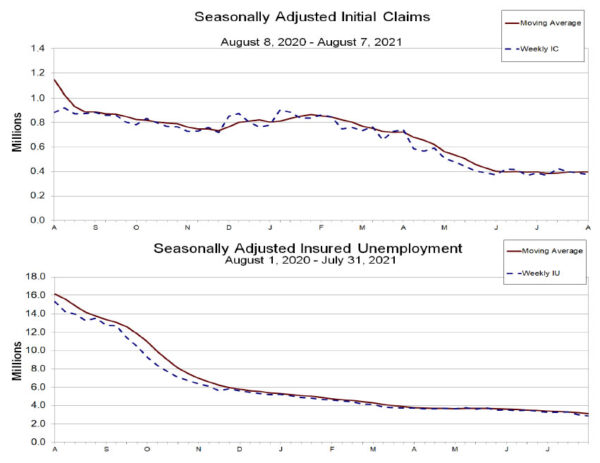
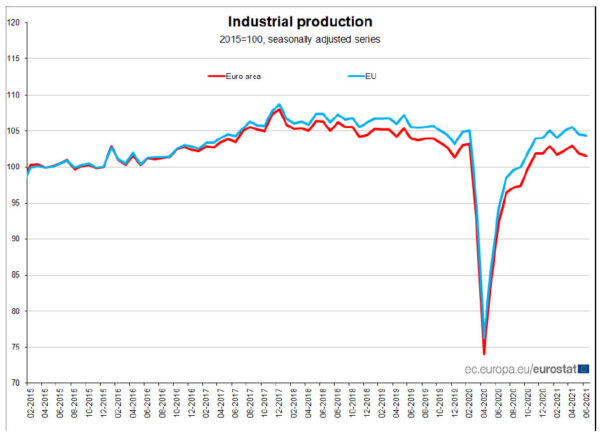
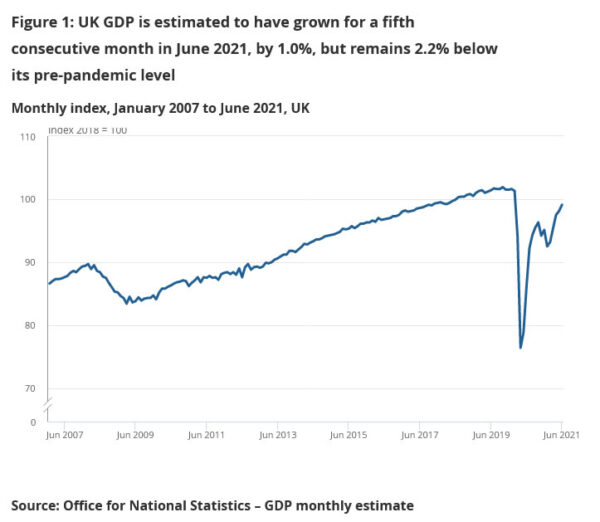
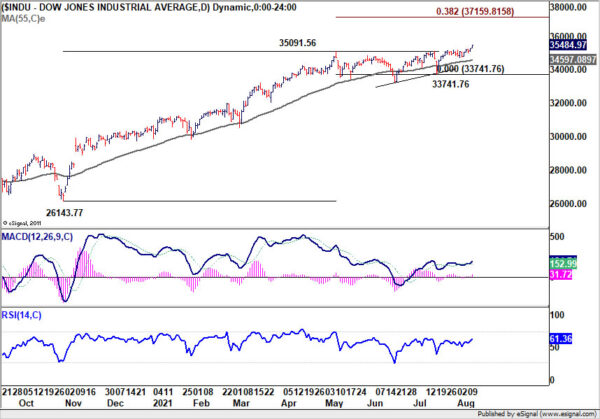

Canada manufacturing sales rose 2.1% mom in June, led by auto assembly
Canada manufacturing sales rose 2.1% mom to CAD 59.2B in June, slightly above expectation of 2.0% mom. Sales rose in 13 of 21 industries, with most of the increase attributable to improved production at auto assembly plants and higher sales of petroleum and coal products. On the other hand, wood product sales posted the largest decline.
Full release here.